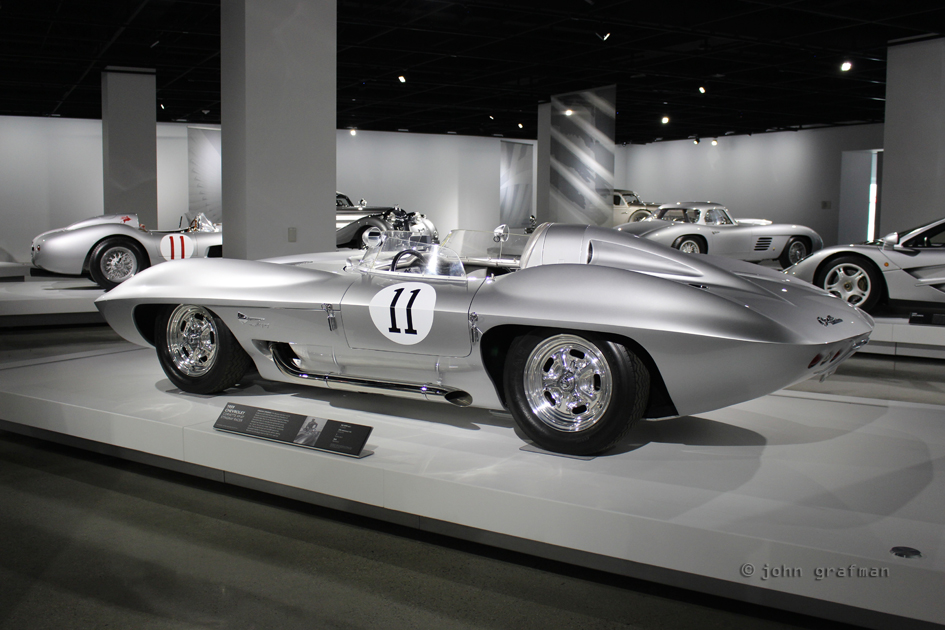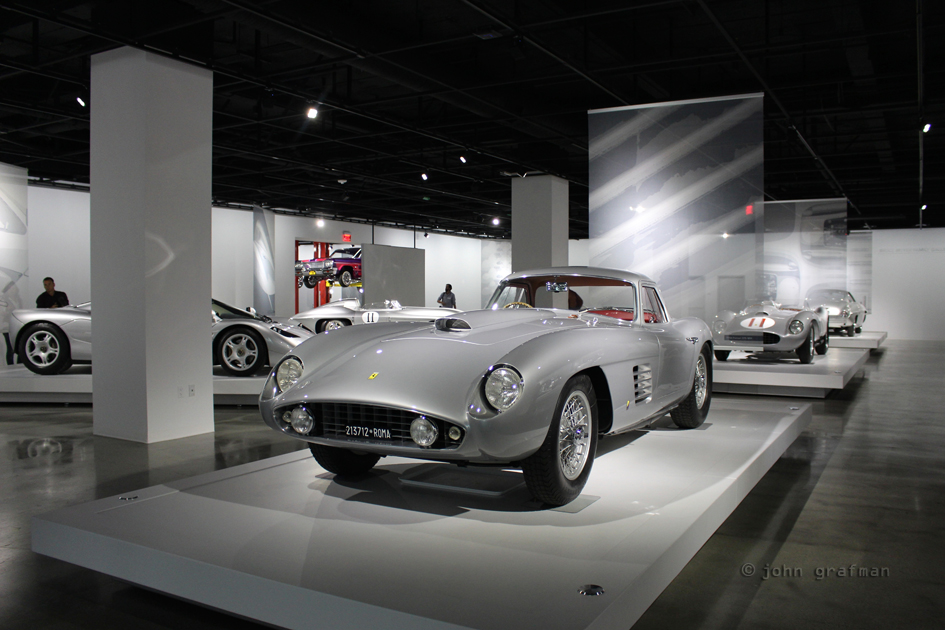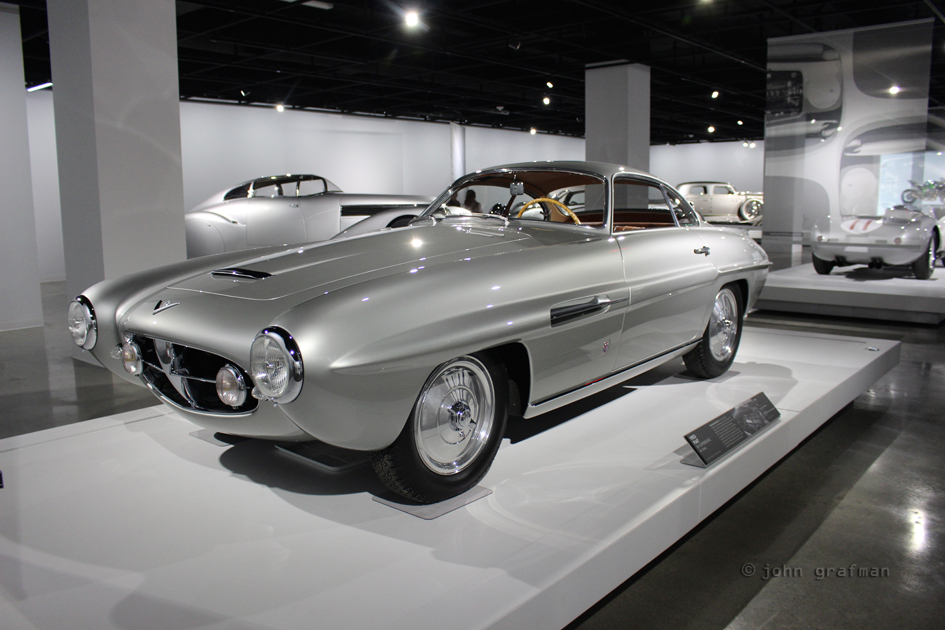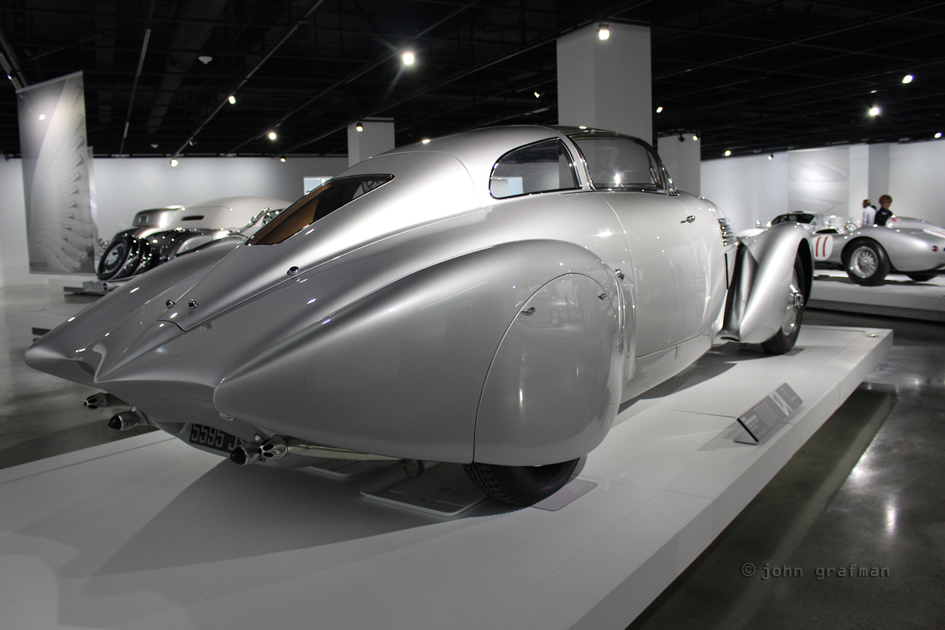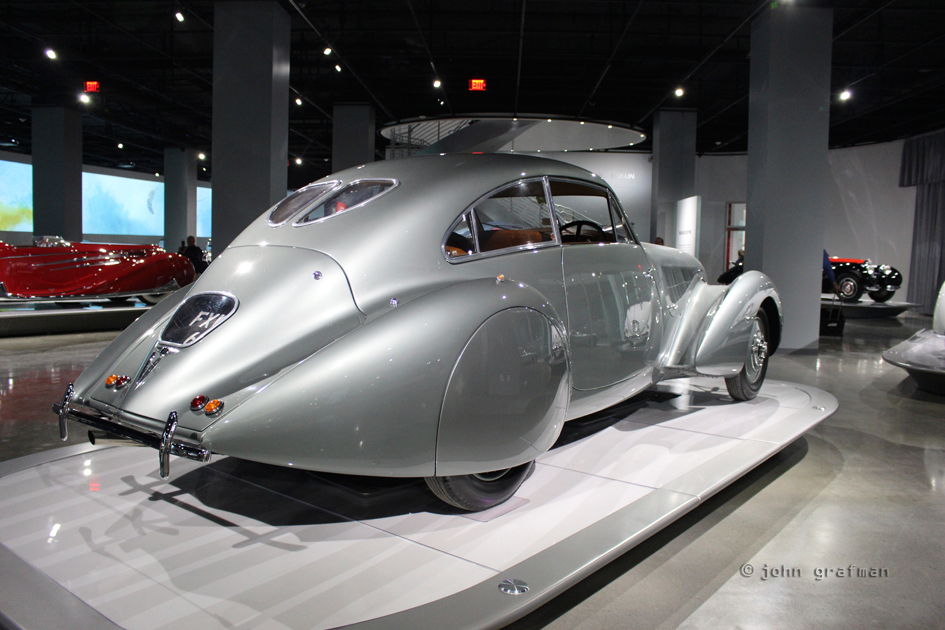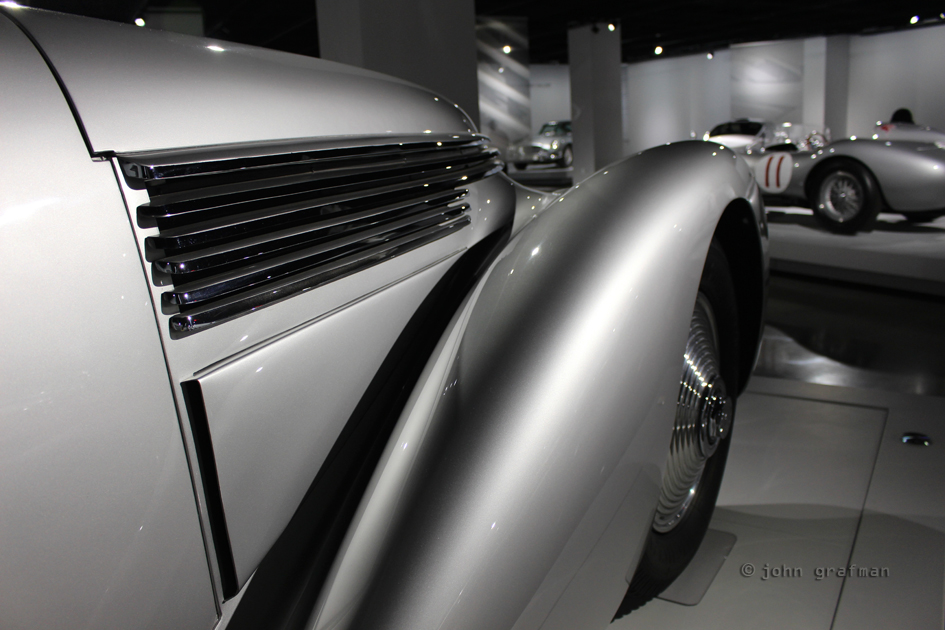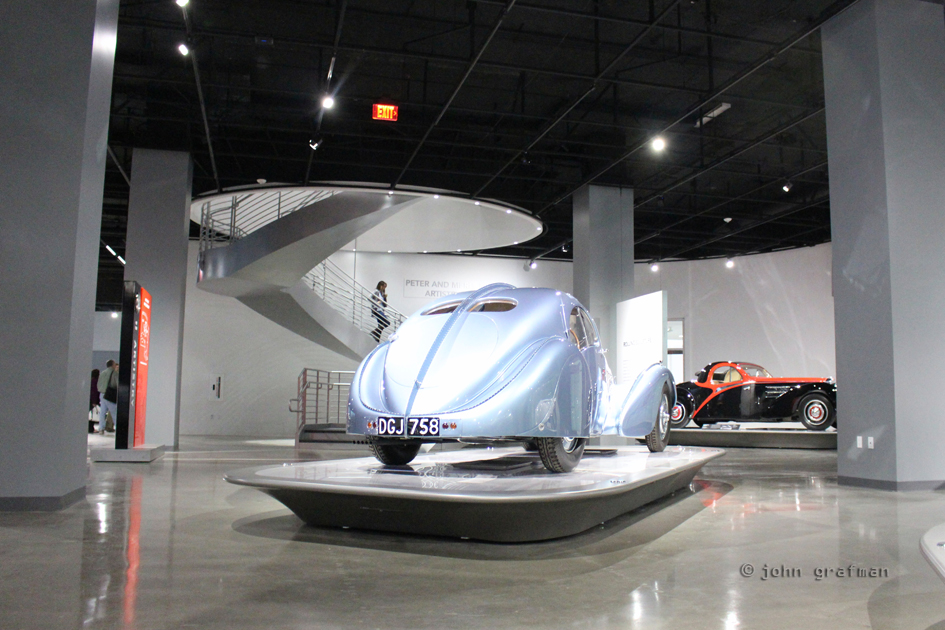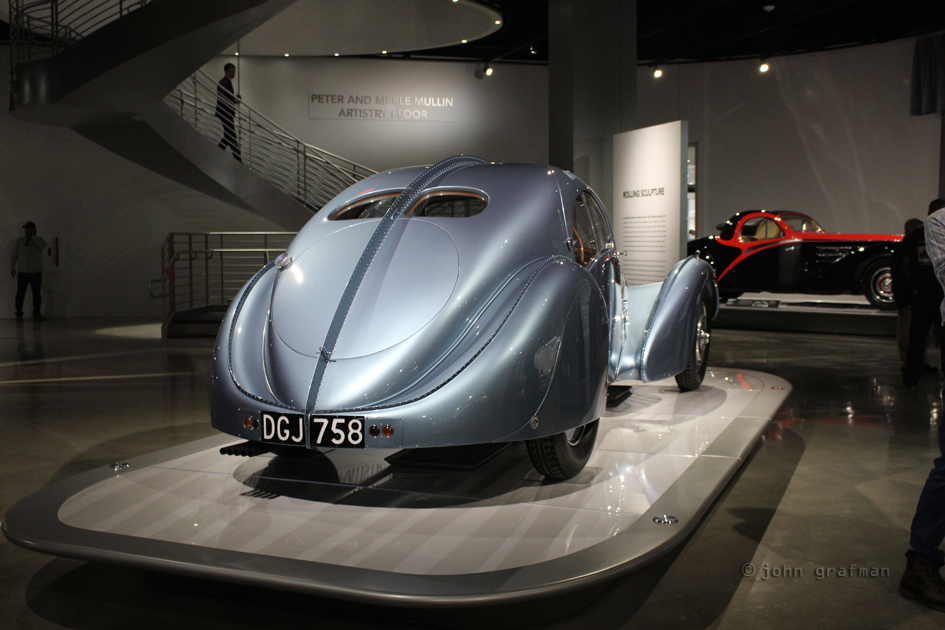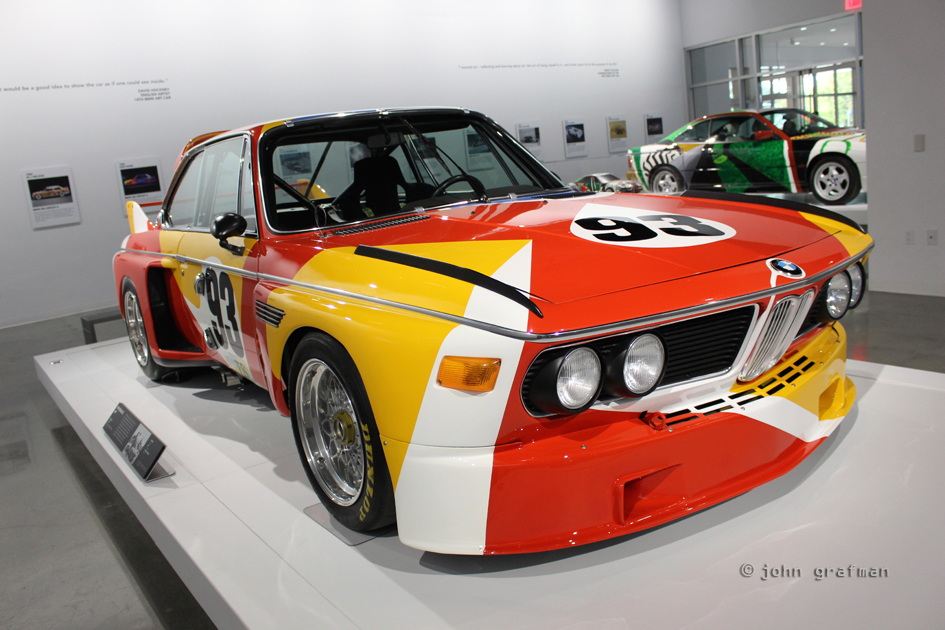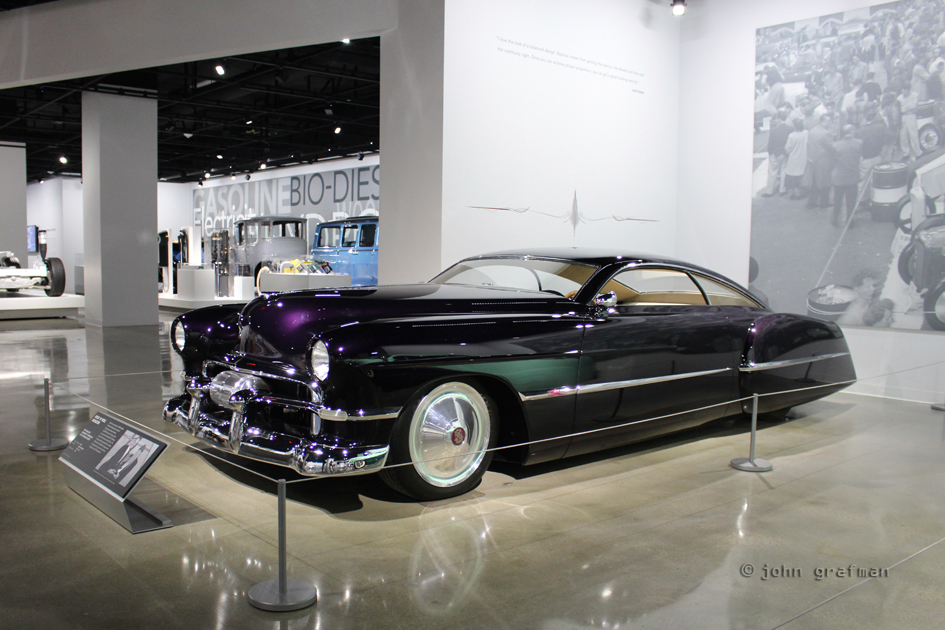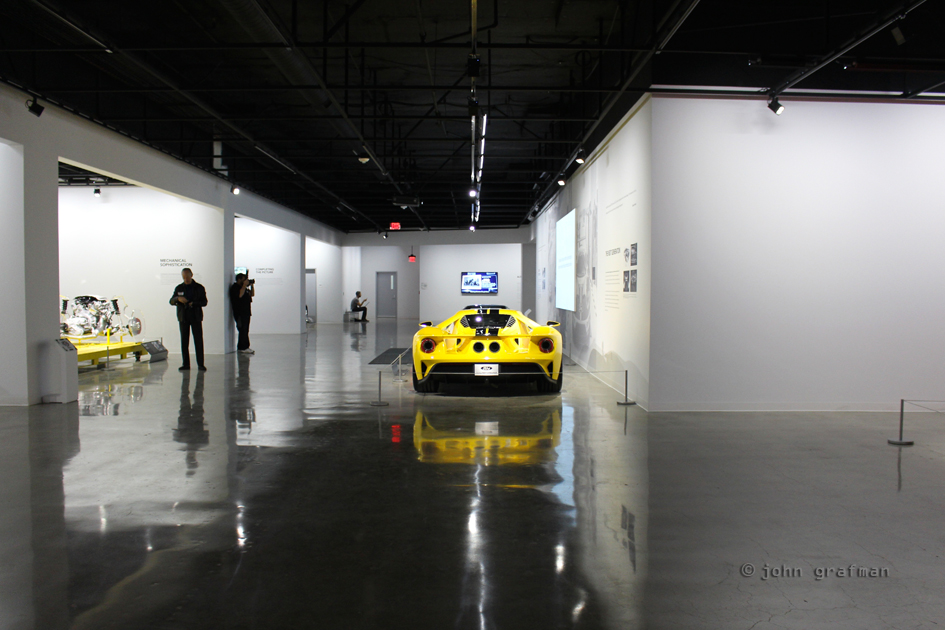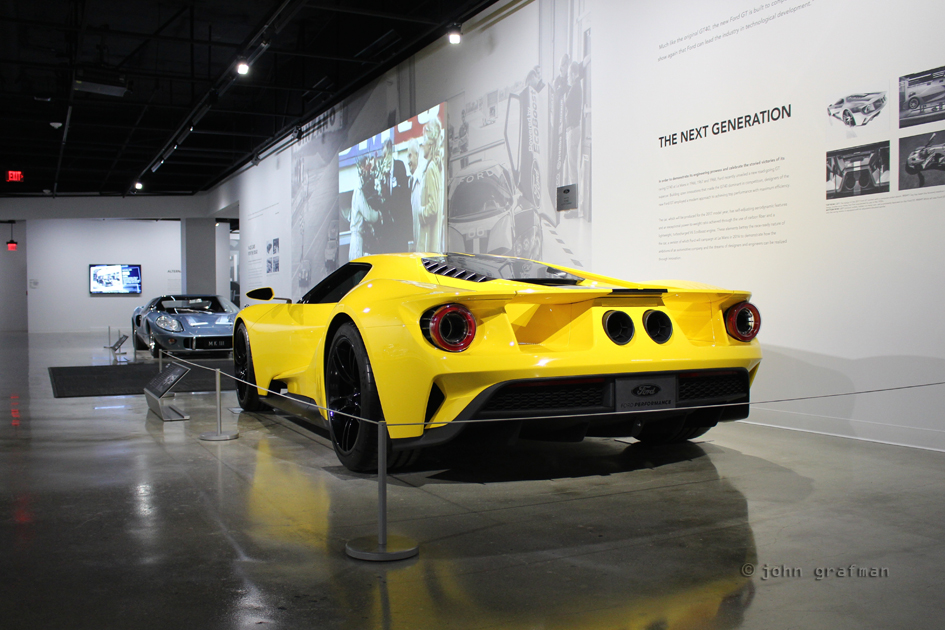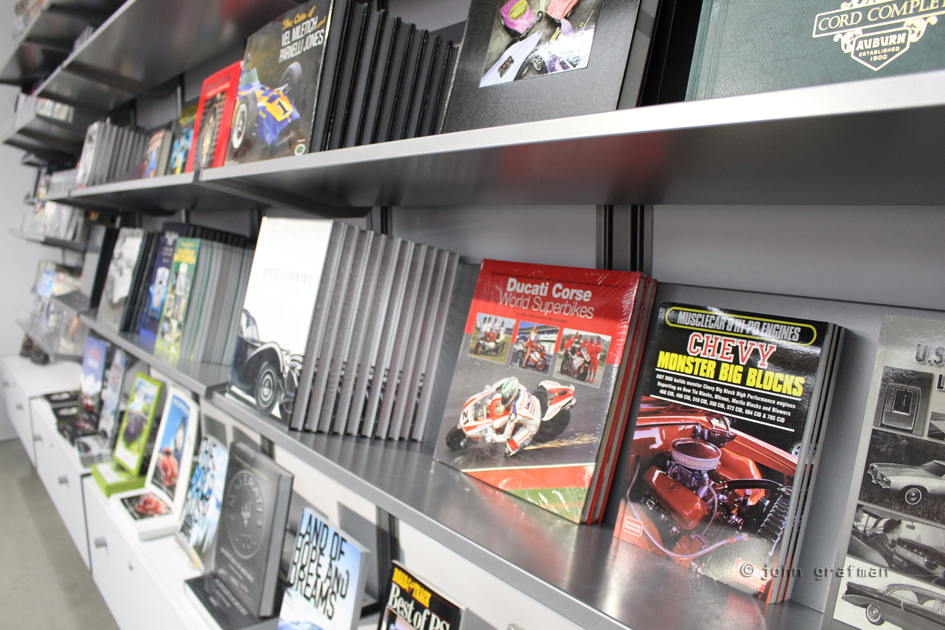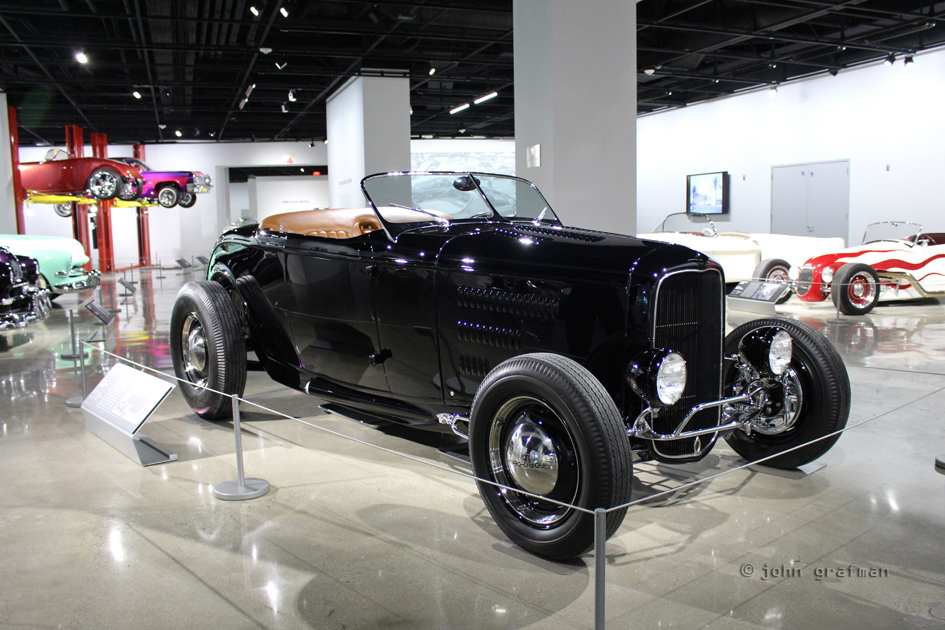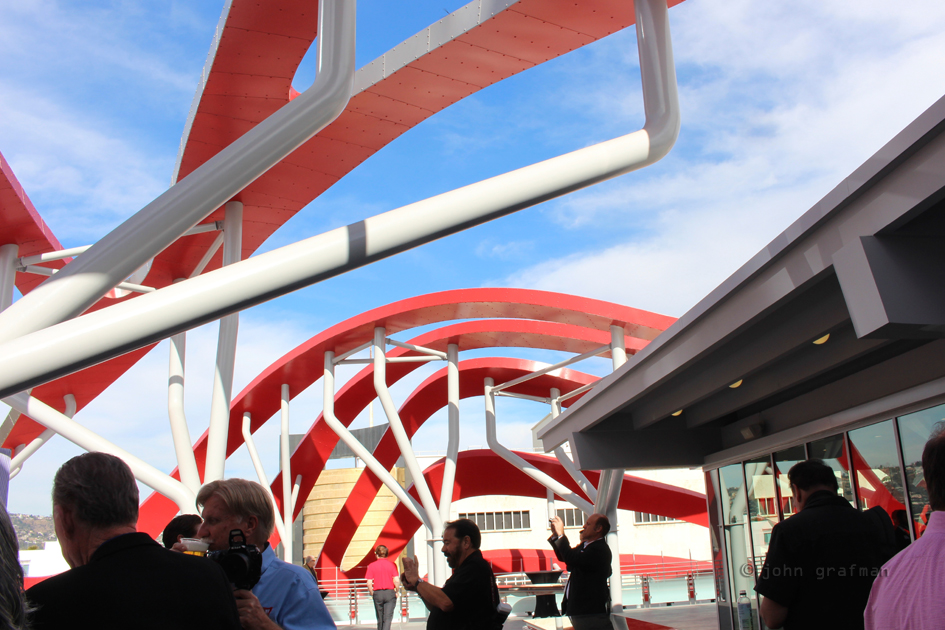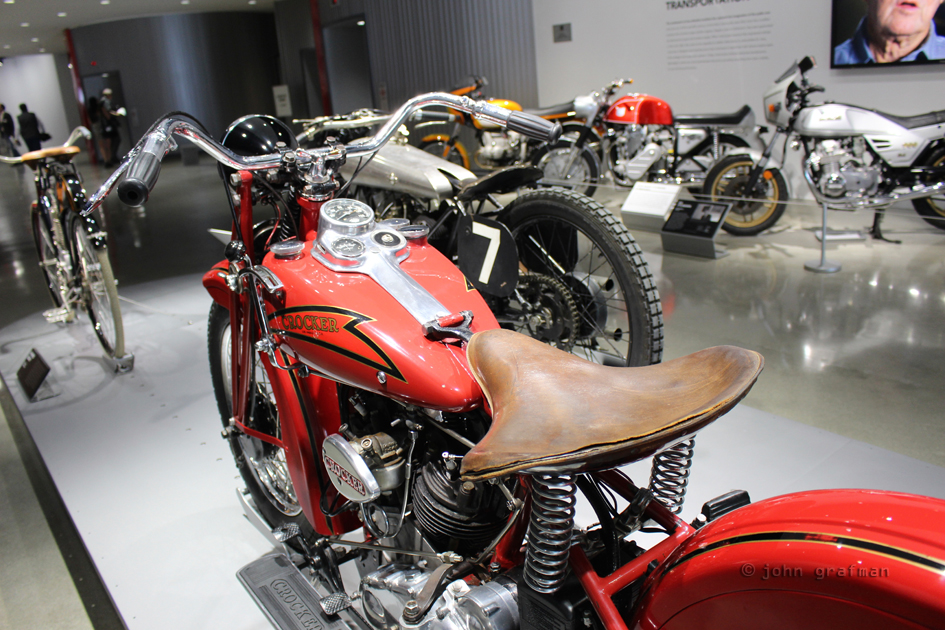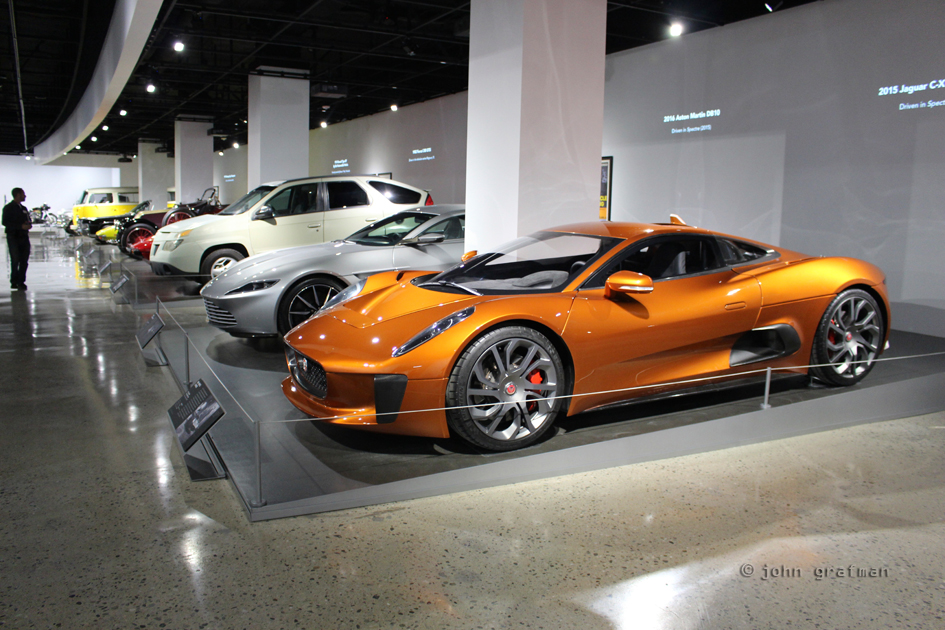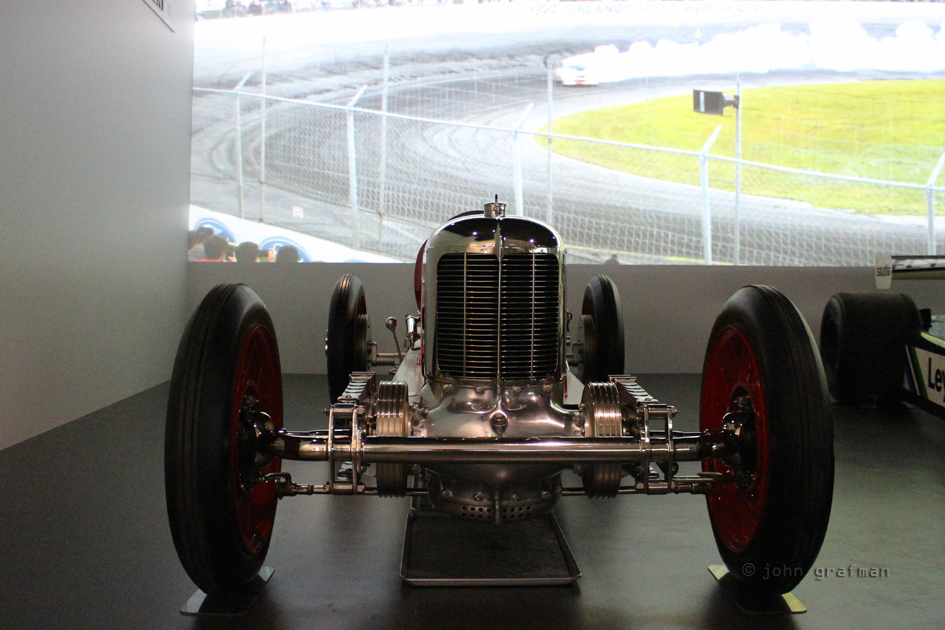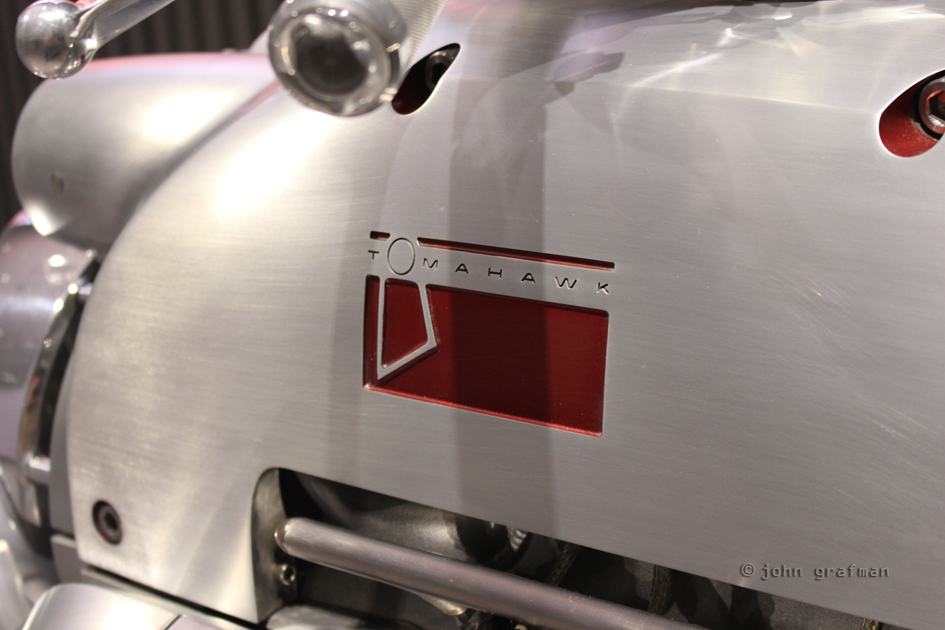report and images by John Grafman
In a land where fantastic exotic cars are commonplace on the streets, it’s refreshing to find a place that offers up something more for auto aficionados.
The new Petersen Automotive Museum in Los Angeles is now the center of the automotive universe. This landmark is bringing together the very best of the best. This is where cars are truly treated as art, and simply being cool isn’t necessarily enough to earn a share of the floor space.
The brain trust at the Petersen Automotive Museum has taken a well-established venue and restored this corner of Wilshire and Fairfax to a brilliant shine. This is far more than a polish and wax job! In fact, some $90 million has been spent on this, with another $35 million being raised for an endowment to continue keeping this museum fresh. Yet, as extensive as this undertaking was, the project stayed on budget and on time.
The Petersen is completely remodeled inside and out. The striking, and often polarizing, exterior with a metal ribbon-like cladding is in itself a masterpiece. The 308 ribbons flow and intersect up and down the sides of the building. 100 tons of stainless steel was purchased for this, and 35 tons of aluminum is employed in this extravagant cladding. 12 “trees” with the largest being 30 feet tall with an extension of 25 feet from center support the ribbons of metal. There’s also another 13 support “shrubs”. All of those metal parts were designed, built, and shipped ready to install by the A. Zahner Company.
The interior architecture and design are more conservative, with gallery-like with white walls and polished concrete flooring over most of the three display floors.
This initially might be seen as plain, but that’s far from the whole story. The automotive collection pops in this environment. The Curator, Leslie Kendall, and board exercised amazing restraint in not squeezing in as many cars as possible in the 130,000 square feet (not including the 59,380 in the vault). That allows each display to have appropriate room for viewing both up close and from afar. These autos are treated more like marble works of art from Michelangelo or Rodin, rather than metal from Ford or Chevy.
Housed within this shrine are 100 cars, 23 motorcycles, 4 motor scooters, and a life-sized version of Lightening McQueen. With a total of 300 or so wheeled vehicles in the permanent Petersen collection, expect to see rotation of displays often. Peter Mullin, Chairman of the Board, is adamant on seeing this is stimulating each and every time guests return, which he hopes is often.
Currently, guests are treated to absolutely dazzling treasures. A few of those are a 1903 Thor Camelback, 1925 Rolls-Royce Phantom 1 “Round-Door” Aerodynamic Coupe, 1936 Crocker V-Twin, 1937 Horch 853 Sport Cabriolet, 1948 Vincent Black Shadow, 1953 Fiat V8 Supersonic by Ghia, 1954 Mercedes W196, a 1957 Ferrari 625/250 Testa Rossa, Jaguar Type-D, and countless other examples of what could be the finest in automotive designs.
Besides the wonderful cars, the museum houses nearly 300 3D artifacts of one type or another, and over 50 other 2D photos and posters.
Also, the setting is excellent for photography, so even those armed with just a smartphone should have images worthy of sharing.
The sparkling setting hosts models from Bugatti to Fisker, and everything in-between. Adding to the visuals are 47 Panasonic projectors adding graphics and video footage. These can work independently or synced up to produce dynamic images. Lighting all of this up requires 80 miles worth of wiring for the LEDs found throughout the building. And, the 45 wireless access points required another 68 miles worth of CAT6 STP cable.
Moving the offices off the third floor to the lower level has opened up more usable space. That, along with a few other changes now provides for 25 galleries showcasing various themes, including the Hollywood Gallery, Charles Nearburg Family Motorsports Gallery, and the glamorous Prestige Metal exhibit.
Eliminating the escalators, which have been replaced by a spiral staircase, created even more space. But like most everything else here, there’s more to this than meets the eye. The staircase is comprised of 21 tons of steel and 6,400 pieces (251 unique shapes), totaling 12,000 man-hours to design and construct. Hardly an off-the-rack item.
Other spaces are showcasing the works of BMW with several art cars; Ford and the GT story; and an exhibit showing the inner workings of Maserati. It wouldn’t be at all surprising to see more OEM and industry collaborations at the Petersen Automotive Museum in the future.
New to the museum are the inclusions of spaces for Pixar and Art Center. Pixar is offering attendees, especially kids, an opportunity to learn more about how cars work with 100 animated CARSpads (tablets), and other interactive design touch screens. Jay Ward from Pixar is on hand emphasizing the connection between the animated feature and generations both new and old. The idea here is that the entertainment giant will spark tomorrow’s designers and engineers.
Art Center College of Design now has a fully function glass-walled classroom inside the Petersen. Will students be able to focus with people staring inside, much like at a zoo? While it might be fascinating for attendees, it’s uncertain if this is what students signed up for when paying their tuition, let alone the hour plus drive over the hill from Pasadena. Time will tell how this plays out.
Other improvements include ten sit-down Microsoft Xbox Forza racing simulators, and the Drago Brothers food and beverage. Expect the restaurant on the first floor to be open a few months into 2016.
The Petersen Museum connects with it history in publishing and the current keepers of the Petersen flame. TEN, The Enthusiast Network, will house its archive, which includes the Petersen publishing archive, at the museum. This is the largest archive of its kind with about 8 million images. These will be digitalized for future generations.
Renovating the 21-year old Petersen Automotive museum on the site of the former Seibu department store that was opened in 1962, was a monumental task led by an equally significant team. Terry Karges presides as Executive Director, and shares the stage with Peter Mullin, Chairman of the Board for the official ceremony on the preview day. Accompanying them are Bruce Meyer & David Sydorick, Vice Chairmen, and the Board of Directors; Richard Varner, Richard Roeder, William Ahmanson, Charles Nearburg, and Lawrence Piro.
The group that leads this renovation has the vision, means, and a love of transportation that is second to none. This is indeed a rare combination. With a bit of luck, their passion will catch on with others. The Petersen Automotive Musuem is banking on it!
________________________________________________________
To see it all, the Petersen Automotive Museum opens to the public on Monday, December 7th. The museum is open seven days a week, from 10am to 6pm, and admission prices are as follows: adults – $15, seniors and students – $12, children – $7, active duty military and educators – free, Children under 3 – free. To learn more about The Petersen, its latest exhibits, rotating galleries and special events, please visit www.Petersen.org.










